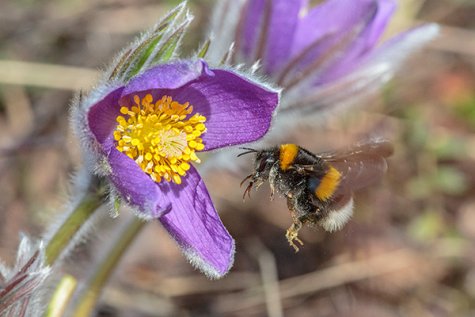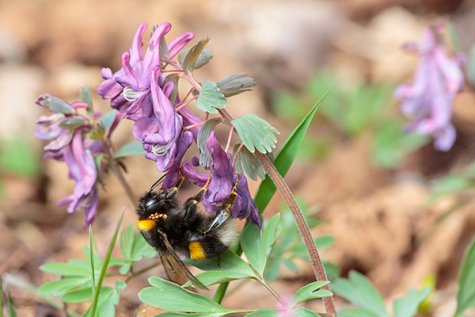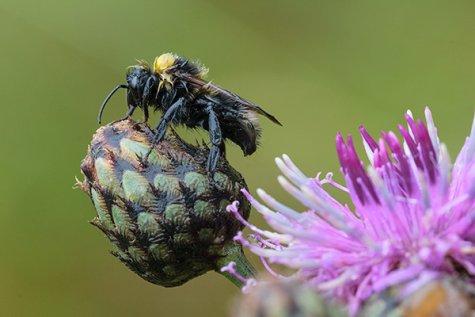Photographing bumblebees
Text: Urmas Tartes
Translation Liis
Photographing bumblebees is a challenge for every photographer. Bumblebees are extremely busy creatures and usually we meet them in action somewhere – flying or collecting nectar from flowers.
On photographing bumblebees their activities should be observed to start with: what kind of flowers they visit, their behaviour on the flower, how they move from flower to flower. It is important to try to predict their movements a little ahead, and so be able to position and pre-focus the camera on the spot where the bumblebee is likely to arrive. It is the most efficient way of catching a moving object in the frame. Whether to use manual focus or autofocus depends on the camera and the lens.
In camera settings attention should be paid to the shutter speed – the shorter the exposure time, the sharper the image. Even when photographing at noon the ISO sensitivity must usually be increased.
If possible the camera should be set in sequence mode: taking a number of frames continuously, then selecting the best ones. On photographing moving objects inevitably many frames have to be discarded but the successes offer the more satisfaction. If necessary compose the images during the editing process.
Bumblebees often have to be photographed in direct sunlight. The contrasts in light are great in such cases. Using a RAW file is useful in such cases because there is more freedom to set the details of highlights and dark in the editing. In moderately cloudy weather, the light is softer and problems are fewer.
Sometimes a worker bumblebee stays in a flower for the night. It is one of the rare chances to photograph a stationary bumblebee. Such photos can even be made using a tripod.
White-tailed bumblebee (Bombus lucorum) approaching a Pasqueflower (Pulsatilla vulgaris). I settled down to wait at a flower, which the bumblebee would be likely to visit. For a brief moment the bumblebee hovered, standing almost still in the air. I used tracking autofocus and continuous serial shooting. Canon EOS 5D Mark III, EF180mm f/3.5L Macro USM, f/13, 1/2000s, ISO 6400.
White-tailed bumblebee (Bombus lucorum) on bird-in-a-bush (Corydalis). A softer light, coming through slight clouds, makes the photographing somewhat easier. Canon EOS 5D Mark III, EF180mm f/3.5L Macro USM, f/11, 1/1600s, ISO 6400.
Worker bumblebee waking up in the morning on knapweed (Centaurea) flower. Its fur is wet from rain in the night. Photo made using tripod. Canon EOS 20D, EF180mm f/3.5L Macro USM, f/11, 1/60s, ISO 800.
Translators note: Estonian original published 24.04.2014











